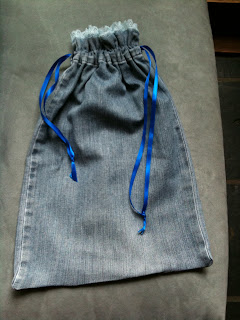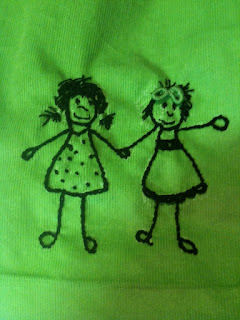
There is much argument about the terms "Oya" (current Turkish term, derived from Greek & meaning
'edging') and "Bibila"(current Greek term).
Pat Earnshaw's A Dictionary of Lace says it is a needle-knotted lace using a special knot and made in Turkey, Syria, Armenia, and parts of Greece. It often takes the form of three dimensional decoration of brightly coloured silks, like a garland of flowers, said originally to have embellished the yashmaks of the harem women. It was revived in the second half of the nineteenth century as dentate borders to headscarves and handkerchieves, sometimes using cotton instead of silk.
Mary had a lot of examples, some from the Guild Museum, and some of her own, purchased on visits to the Eastern Mediteranean region.
Some are raised and stiffened, using transparent thread, like fishing line, on the edges.

They are purchased in strings, taken off and added to an edging.
Others are flatter, and more like tatted or crocheted lace.

Very beautiful.
Some of us then had a go at making it, using some samples Mary had begun for us by creating the first row - rather like a button hole stitch along an edge.
The basis is a figure 8 knot.
You thread your needle and tie the needle end with a knot so it doesn't slip.
You put the needle through an existing loop and cross the end away from the needle over the top of the needle (the eye of the needle is under my thumb).
You then take the needle end of the thread under the needle and draw the needle through, making a knot that sits at the top of the loop in the row below. You pull the needle through at an angle to your right (if right-handed).

After a while you fall into a rhythm and tension becomes a bit more even, giving a very neat edging. I fiddled with mine at home for a bit, and finished it off to form little peaks - making it up as I went, just to see how it might finish.
Elena Dickson, of the SA Lacemakers' Guild, is an Oya/Bibila expert and has written a book on the subject. She is, according to Mary, going to write another book for the 2014 Lacemakers' Convention.
It was a companionable and informative session on, for me, an entirely new embroidery technique.
The example I will remember longest is a headscarf - quite a simple printed fabric with an uncomplicated added border of beautifully blended colours. Mind you, uncomplicated would still have taken hours of work, even for an experienced Oya embroiderer!






























